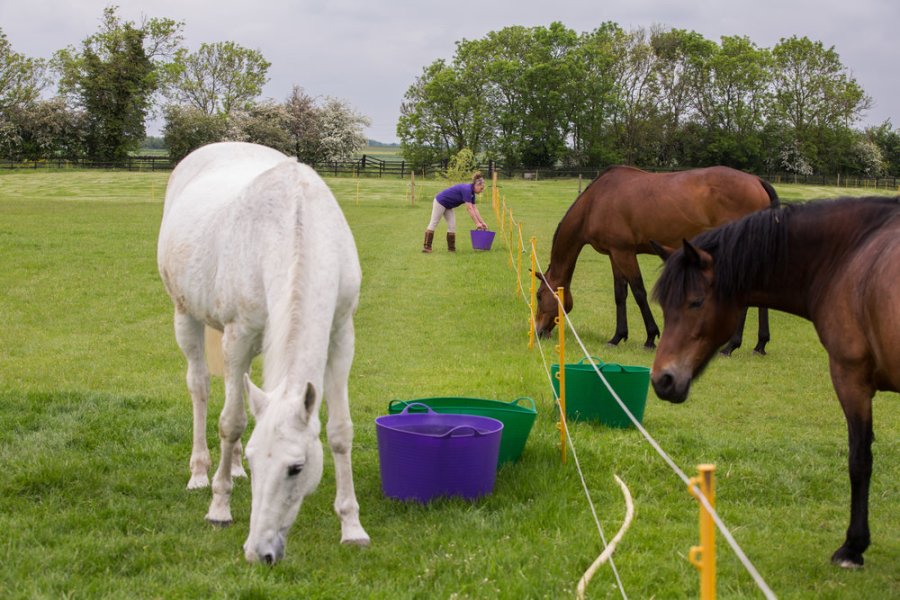Ensuring you have the right fertiliser for your paddock maintenance is vital, as your horse relies on grass for many nutrients. Land management expert Jenna Scott shares all you need to know about fertilising your fields.
Before fertilising, test the soil to establish the pH. This will help you understand what nutrients your soil needs for optimal health. The optimal pH is 6.5 and samples should be taken from February to April, or September to December. Take regular readings so you have a steady understanding of your soil’s pH level – taking just one sample can be misleading and can lead to the wrong fertiliser being used.
If the pH is acidic, apply lime to help reduce the acidity. It’s important to deal with the acidity level of soil as soon as possible as acidic soil will decrease plant nutrients, such as phosphorus and molybdenum. Not only does it take nutrients, but it can actually provide toxic levels of aluminium and manganese, which can kill off grass.
When to apply
Paddock fertiliser is best applied in the spring and autumn. Granular fertiliser can be applied with a spreader and, like spreading grass seed, it’s far quicker than doing it by hand and ensures even coverage to avoid clumping. It’s important to make sure your fertiliser is applied evenly or you can end up with patchy grass growth.
Hungry grass will not necessarily put on any new growth and under stress is more likely to go to seed, making it unpalatable for horses. Adding fertiliser/ nutrients to the soil will ensure good grass health, steady growth and consistent grazing.
For a spring application, a lower nitrogen fertiliser will reduce a flush of growth and should be avoided, particularly for horses prone to laminitis.
Putting fertiliser down when you are re-seeding or over-seeding your paddock will ensure the new seed has the nutrients it needs to establish stronger and healthier grass. A paddock that will be grazed by laminitics will still need the nutrients, but you should use a lower nitrogen fertiliser.
Micronutrients
Many swards and therefore many grazing animals can be lacking in one or more micronutrients. This can cause health issues, fertility issues, or both (as well as restricted grass growth). Paddock fertilisers contain the necessary micronutrients to improve the quality of the grass sward, while also allowing these nutrients to be present in the soil for the grass to uptake – to then pass on to the grazing animal as a natural source.
An indication of lack of nutrients, such as copper, can be loss of pigmentation around the nose and on the end of the muzzle, and is also common in other grazing animals such as sheep.
Meet the expert: Jenna Scott works for Boston Seeds, an independent wholesale seed merchant, founded in 2002. They sell grass seed online and are the leading online UK supplier of grass seed, lawn seeds and native British wildflower seeds with nationwide delivery available on all products. Visit bostonseeds.com
Check out our subscription offer









